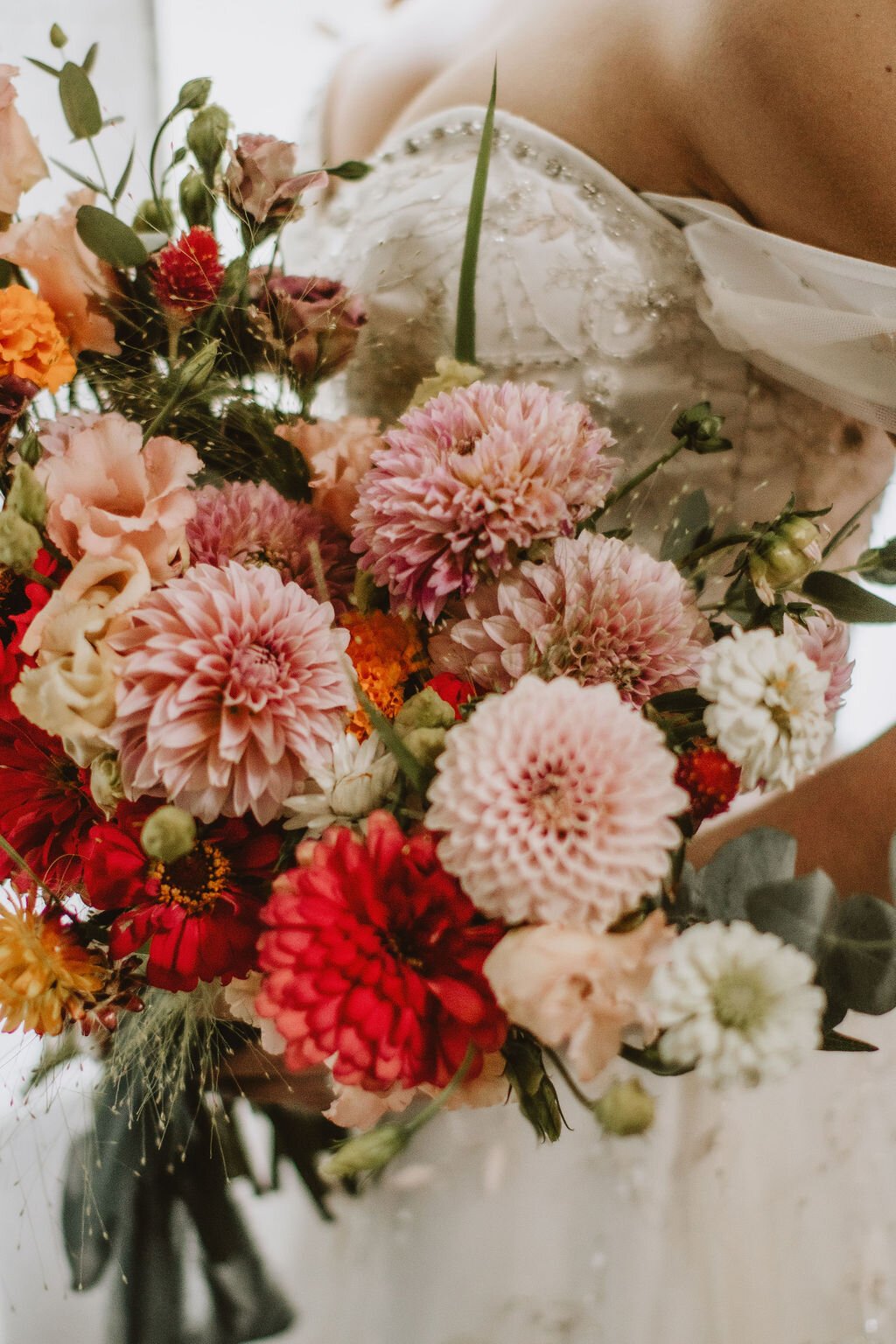From Farm to Wedding Day: The Cost of Floral Arrangements
As estimates and wedding costs continue to eat their way through your budget, it’s natural to wonder where all of these numbers come from. When it comes to floristry, there are so many things that go on behind the scenes, before your wedding day, that factor into the overall cost.
Long story short, you pay for both the product and the service. A lot goes into getting your floral arrangements and wedding bouquets from the farm or the field to your wedding, The extended version is that the journey starts with the product—how it’s grown—and ends with your bouquet, arrangement, installation, and presentation
The Field Work
Everything, flower and plants alike, start as seeds. Before being planted, seeds are tested several times for viability. Doing so allows for the best seeds to be planted in anticipation of them producing the best, brightest, and greatest blooms. This process takes time—and a lot of it.
After the seeds are planted and nurtured, they’re then harvested. The fieldwork necessary for this process involves equipment, manual labor, labs, and any other necessary skills and scientists needed to complete any analyses.
Placing Your Order
After meeting with your florist and providing your color palette and choice of florals, we begin the process of building your arrangements on paper. We research what’s available according to the season and your budget. We consider your wedding theme and venue when determining which blooms, foliage, and greenery would best come together to create the most unique bridal bouquet, centerpieces, arbors, and arches for your wedding.
In the United States, much of the flowers used for weddings are imported from South America, where the climate allows farmers to grow larger flower crops year-round. In other cases, flowers may be imported from Europe or Asia. To ensure the freshest ingredients, flowers are shipped via expedited shipping, in refrigerated containers that can ensure safe and timely delivery.
It’s very common for florists to alter their initial, and even their contingency, designs. Whether it’s an issue with budget or supply, florists regularly rethink the structure of arrangements to accommodate any changes and requests. Because our bouquets and centerpieces have a minimum of twelve ingredients, this process can become very lengthy, taking several days of research, investigating, and phone calls.
Process and Prep
Once your ingredients have arrived at us safely, the fun begins. All orders and all ingredients must be processed. Processing involves a delicate process of trimming stems, stripping foliage, and transferring flowers into fresh containers of water so they retain optimal health and vibrancy. Depending on the size of the order, processing can take anywhere between a couple of hours to a full day. After the flowers are processed, they are then prepared for installation.
Creation and Installation
Newly processed flowers are delicately blended into arrangements. After separating and sorting the ingredients by arrangement, all bouquets, corsages, centerpieces are constructed. Some arrangements may be hand-tied with ribbon while others are set aside in freshwater for later usage. Arbors, arches, and tables are installed on-sight and can take hours to put together and even longer to take down.
The easiest way to save money on your wedding bouquets and arrangements is to source/shop locally and within your season’s natural availability. Ordering from local farmers allows your florist to work with farmers they have built relationships with to possibly save on costs or fees. This will also provide the freshest ingredients, as most blooms will be picked up and processed the day, or a few days, before your event.
These beautiful bouquets, backdrops, centerpieces, and exquisite designs are worth everything that goes into creating them. Not only do they look and smell amazing, but they also create a separate memory from your wedding that you get to cherish for the rest of your life.




